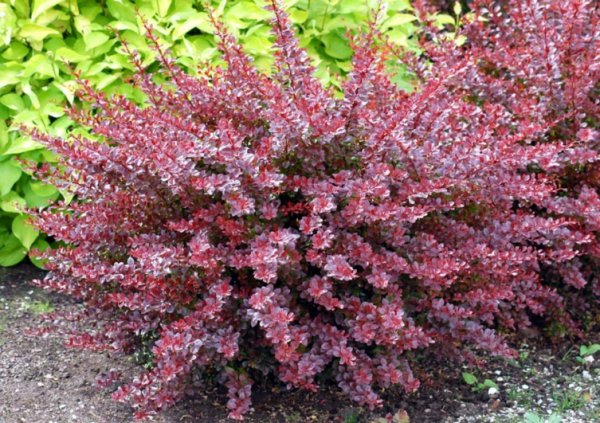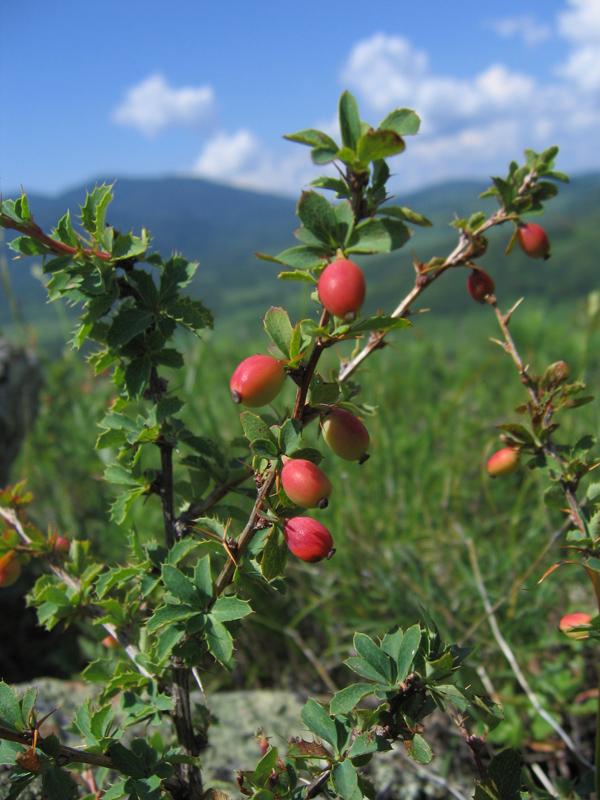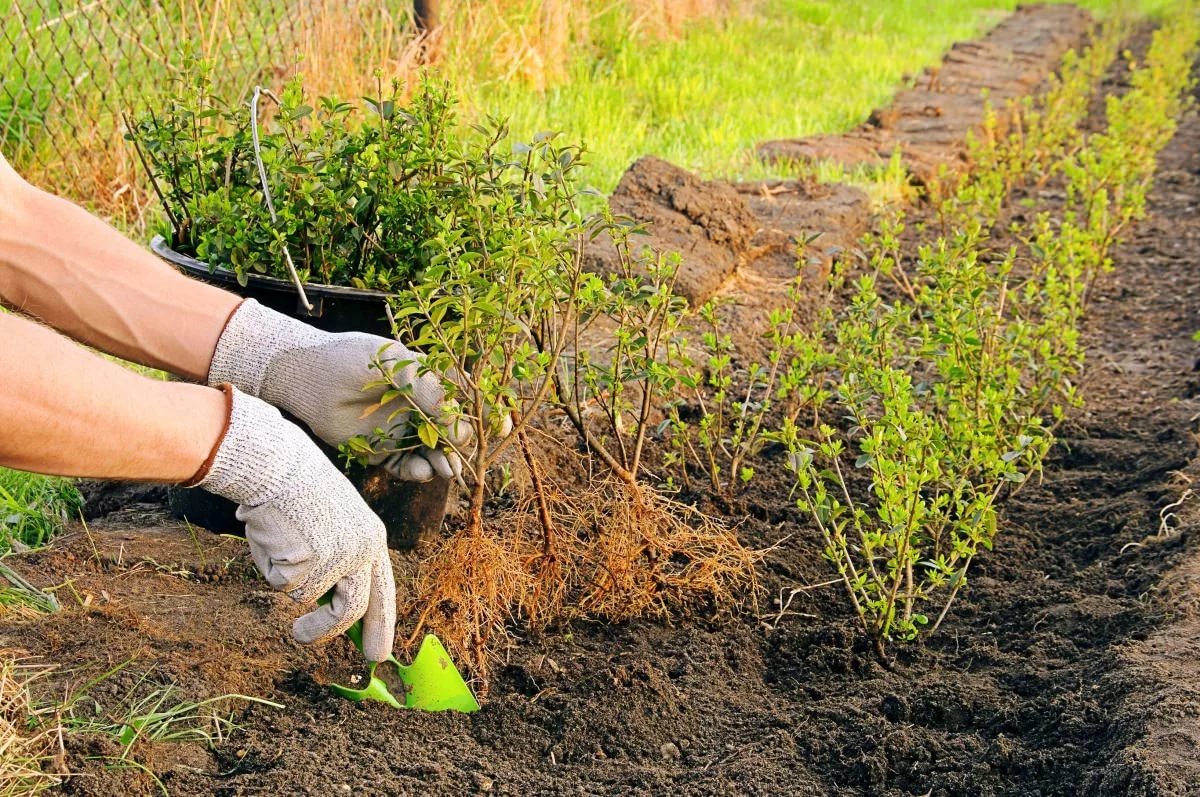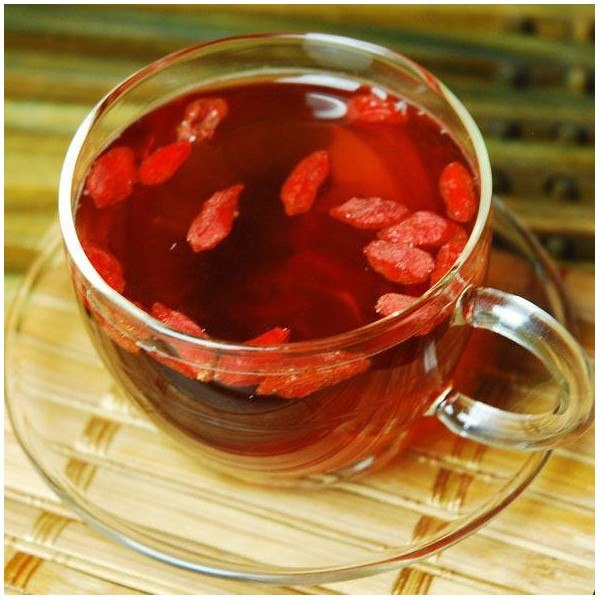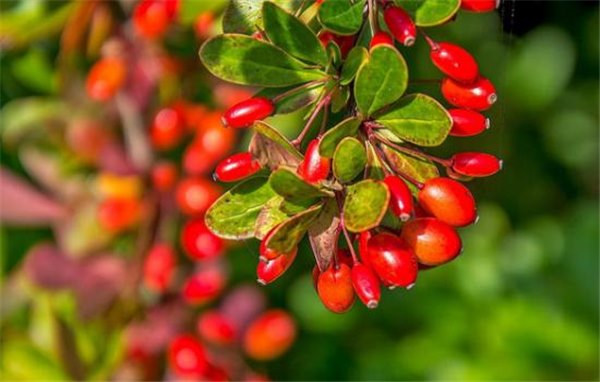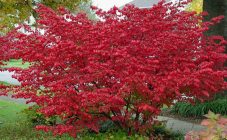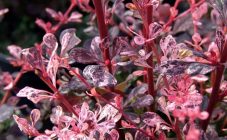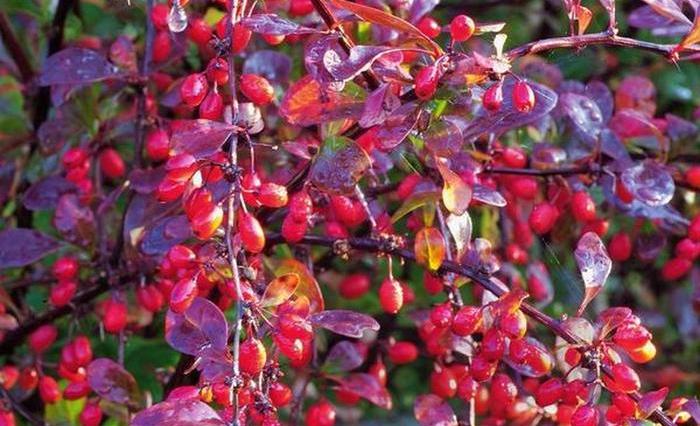Content:
Common barberry, or in Latin Bérberis - an evergreen representative of the barberry family, shrub genus. The distribution area includes mountain regions of Europe, North America, Persia, Eastern Siberia. Asia Minor is considered the homeland.
In addition to the main name given by botanists, the barberry bush has popular names: "sour", "thorny bush".
Further in the text, a detailed description of a shrub or tree will be considered (the difference is only in the growth of the trunk), the rules for growing, reproduction and caring for it will be indicated, as well as possible varieties and areas of application of sour.
Characteristic
To understand what a barberry shrub looks like, it is worth studying the information below.
Sheet
The green mass has a light green color, turning into an orange-yellow or red hue in the autumn period. Each leaf is ovoid with a slightly tapered base and tip and scalloped edge. During the transition to winter mode, it partially falls off.
Fetus
The berry has the shape of an oval, colored red with an orange tint and a black top. Fruit size varies from 80 to 100 mm in length.
Trunk
The tree reaches a height of 3 m, has the same size in diameter. At the beginning of growth, it stretches upward, subsequently development proceeds in an inclined state. The stem system can be of both medium-sized and fast-growing types. Brown or gray-brown branches with a ribbed surface and a covering in the form of thorn leaves emerge from the base at an angle of 85 °.
Flower
The calyx consists of 3-5 yellow petals with a golden tint, up to 9 mm in diameter. In addition to petals, it has 1 pistil and 6 stamens. Carpal inflorescence holds up to 25 flowers. Answering the question of how the barberry blooms, it is worth saying that the blooming of buds occurs in the 2-3 month of spring and lasts about 2-3 weeks.
Root
The root system is powerful, branched, has 1 main stem and lateral shoots. Painted in yellow.
Description of varieties
Since barberry is a shrub that has more than 600 varieties, they will be described further in the table below. The most popular varieties will be considered, including not only edible barberry, but also a shrub used mainly for landscaping.
Description of varieties
| Variety name, variety / part | Siberian barberry. Homeland rocky, rocky slopes in mid-mountain and low-mountain regions. Distribution - alpine regions of the Eastern and Western parts of the Sayan. | Korean barberry. Homeland - the mountainous regions of the Korean Peninsula. | Ottawa (variety). Parents - tunberg and classic barberry from Canada. The name was given thanks to the city of homeland - Ottawa, in which the crossing was carried out. Areas of growth are considered areas of rivers, ravines and the outskirts of forests on the continent of North America. | Atropurpurea, or red-leaved barberry. The homeland of the decorative barberry is the mountainous and southern regions of the Caucasus. |
|---|---|---|---|---|
| Sheet | Deciduous mass has an elliptical shape up to 300 mm long. The main representatives are green, with piercing edges, peripheral specimens, up to 200 mm long, have smooth edges. The whole mass is colored in a light green color and is presented not in a single, but in a group form, resembling a fan. | The deciduous mass is leathery, hard to the touch and colored red, has the shape of an ellipse, narrowed at the base and rounded at the end. The leaves are not single, they are collected in fan-shaped groups. The withering period begins in the month of October. | Refers to a type of deciduous shrub. The green mass is egg-shaped, 330 mm long, with zigzag or even edges. The color ranges from yellow to dark red. The color scheme depends on the variety. | The green mass has a rounded shape, changing color, depending on weather conditions: in the cold period, it turns red, in the warm season - brown. In spring, the barberry shrub is green, in summer it takes on its true color. |
| Fetus | The berries have a convex oval shape, colored red with a black "nose". The beginning of the harvest is considered to be the second decade of the 3rd month of summer. | The berries are small in size - up to 100 mm in diameter and in the shape of a bright red ball, ripen from 9 to 10 months of the year. | The berry resembles an egg and is colored red. | Inedible berries have a bitter taste, oval shape, red-black color. The ripening period is the second decade of October. Because of the fruits, it is planted for the purpose of landscaping the site. |
| Trunk | It belongs to the dwarf type, reaching a height of up to 1 m. There is a double color: gray - for perennial branches; brown with a red tint - for annuals. On the branches, in addition to the green mass, there are thorns up to 1 cm long. | It belongs to the tall type - it reaches up to 200 cm. On the lower branches there are leaf-shaped thorns, slightly flattened, up to 100 mm long. The needles are arranged not one by one, in groups of 5-7 pieces. | It is a tall type of shrub, reaching up to 2 m in height. The barberry spines are soft. | It belongs to the species of long-lived shrubs - it lives up to 60 years. Fruiting is a fast-growing type: in the first year of development it grows up to 35 cm, during further growth, which lasts for 15 years, it reaches 200 cm in height and 3.5 m in diameter. |
| Flower | Inflorescence, colored yellow, 3 pairs, with a diameter of up to 8 mm, in the form of a spiral with 2 turns. The budding period is 5-6 months of the year. | Carp inflorescence - up to 20 flowers on one branch. The buds are colored bright yellow. The period of collection and preservation of paints lasts from the second decade of May to the first weeks of June. | Refers to carpal inflorescence, has up to 10 yellow, small flowers in a group. The flowering period begins at 5 months of the year and lasts about 3 weeks. | Yellow carp inflorescence - contains up to 2 flowers on one branch. A single copy up to 100 mm in diameter. The flowering time falls on the first ten days of May. |
Agrotechnics
Site preparation
To create a comfortable home for the future tree, you need to dig a hole 40 cm high, wide and deep. After receiving the pit, you need to moisten it well and put 3 layers on the bottom:
- drainage - 1 kg of dry grass, a mixture of foliage and limestone;
- base - 9 kg of humus, sand and leafy earth;
- anchorage layer - 1 kg of ordinary soil to reduce the risk of burns when the root system of young animals comes into contact with feeding.
Landing
In order for the seedling to take root well and begin to grow rapidly, it is advisable to plant it in a previously prepared "house", spud and water, thoroughly moisturizing the soil, but without making a swamp. After creating comfortable conditions, the young tree should be protected from the cold and attack of mice by placing a mixture of straw, dry grass, leaves and wood ash around the planting site. After finishing work with the ground, gardeners are advised to cut off part of the sprout, leaving only 7 buds - pinching will help accelerate the growth of the future tree.
Reproduction
Since a large number of trees can be grown by cuttings, shoots, seeds and dividing the bush, it is worth talking about each method in more detail so that it is easier to choose the right one.
Cuttings
To use this method, it is necessary in the first month of summer to select healthy fruit-bearing trees and cut them off using a pruning shears at an angle of 45◦ 15 cm long shoots. house "(a mixture of sand and peat or vermiculite or perlite). Before the first shoots appear, it is advisable to cover the improvised bed with a film to create a mini-greenhouse.
After the appearance of the first shoots, it is necessary to dive each tree into a separate pot, adding fertilizers with a predominance of minerals to the soil, and after a year admit it to a permanent "place of residence."
Seeds
Choose the healthiest and largest berries before planting. After making the choice, it is advisable to rinse the selected specimens, disinfect them by holding them in a low-percent manganese solution and dry them. After preparing the planting material, it must be planted in the autumn period in a pre-prepared bed to a depth of 3 cm, leaving 10 cm of free space between future seedlings, and covered with peat and mulch in the form of dry straw, grass, add a layer of snow in the winter with little snow. After planting, wait for the first shoots and carry out artificial selection, leaving the strongest specimens, which will then “move” to a permanent place of “residence”.
Dividing the bush
To obtain several healthy trees, it is advisable to select a strong fruit specimen and dig it out of the ground, cut it in half and plant it in pre-prepared pits. After transportation, spud and water.
Undergrowth
Choose a healthy and strong fruit and put a few lower branches in the pre-prepared trenches. After laying the planting material, fix it with metal brackets, cover it with earth, and periodically water it. After the emergence of young shoots, carefully separate from the mother tree and transplant to a permanent place.
Care
To make the shrub feel good, it is desirable:
- monitor the moisture content of the soil, watering the fruit under the root with settled water at intervals of 1 time in 7 days;
- loosen the soil and clear it of weeds and dirt;
- remove fallen leaves and rotten fruits;
- apply fertilizing with nitrogen-containing fertilizers at intervals of 1 time in 4 years, observing the proportion: 25 g per 10 liters of water;
- feed with ordinary organic fertilizers 1-2 times a year;
- prune every spring before the leaves bloom, removing old and rotten branches in order to give the plant a beauty and keep it healthy;
- “Put” into hibernation in the first 3 years of life, covering with leaves, soil, sand, film.
Harvesting and storage of crops
It is imperative to pick the berries after they are fully ripe, otherwise there is a risk of poisoning.It is recommended to store the crop dry for 24 months and in its usual form - 36 months, it can also be candied by mixing with sucrose in a ratio of 1 kg of sand to 1 kg of berries or salt by dipping it into a solution of 200 g of sodium chloride and water.
Protection from pests and diseases
To maintain the health of the shrub and reduce the percentage of pest attacks, you should:
- remove rotten parts of the plant, avoiding creating comfortable conditions for pathogenic bacteria (against spotting, powdery mildew, wilting);
- spray before and after winter cold weather with insecticides, for example, Fitoferma or Bordeaux liquid (against rust), Sulfur solution (against dew);
- disinfect branches and bark by treating with infusion from a pack of soap and a bucket of water (prevention against aphids);
- loosen the ground, removing weeds and pest larvae (against the sawfly).
Application
Barberry is a plant widely used in the following areas due to its beneficial properties.
The medicine
Infusions and medicines from the root and leaves are used not only for medicinal purposes as a spasmolytic (gallbladder treatment) and antiseptic, for blood clotting, stopping bleeding and treating blood vessels, but also help in the first birth, accelerating uterine contraction.
Gardening
Thanks to its natural thorns, the shrub is useful as a living enclosure of a garden or garden plot against intruders. Wood is used to create paint.
Cooking
Due to the presence of malic, citric and tartaric acids in berries, sweet desserts, syrups, compotes, liqueurs and sweets are prepared from them. The green mass can be used for pickling.
Cosmetology
Leaf infusions - to strengthen the scalp. Decoctions of berries strengthen the hairline.
Advantages and disadvantages
In the ranks of advantages it is worth adding:
- high adaptive qualities;
- frost resistance;
- not picky about the soil;
- variability in reproduction.
Among the disadvantages it is worth noting:
- contraindications during pregnancy (increased risk of losing a child) and hepatitis B, chronic diseases of the gallbladder and exacerbated hepatitis;
- excess consumption of fruits leads to poisoning, expressed in dizziness, nausea, convulsions;
- an unripe crop is harmful to health.
Summing up, it is worth noting: it was indicated what a barberry is, and not only the unique features of this plant were considered, but also its varieties, differing in individual characteristics, were given.
In addition to the characteristics, the breeding options, the rules for growing and caring for the decorative and at the same time edible and useful representative of the flora were considered.
Finally, it is worth noting that when choosing a particular variety, it is advisable to pay attention not only to the characteristic features of its cultivation, but also to climatic conditions in order to create a favorable atmosphere for it and enjoy a rich harvest.
